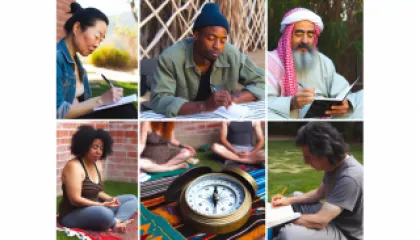Mastering Personal Boundaries: The Complete Guide
1 year ago
Boundaries in Personal Life
Applying Lessons from 'The Alchemist' to Manage Chronic Stress
1 year ago
Managing Chronic Stress
The Science of Breaking Bad Habits: Strategies That Work
1 year ago
Breaking Bad Habits
Overcoming Adversity: My Path to Building Resilience
1 year ago
Resilience
5 Essential Steps to Enhance Your Digital Wellbeing
1 year ago
Digital Wellbeing
Overcoming Disordered Eating: A Step-by-Step Guide
1 year ago
Disordered Eating
Learning from 'Cocoon': Practical Care Tips for Aging Parents
1 year ago
Aging Parents
Step-by-Step Guide to Managing Toxic Relationships
1 year ago
Managing Toxic Relationships
The Path to Healing: My Insights on Recovering from Trauma
1 year ago
Recovering from Trauma
Mindfulness vs. Meditation: A Step-by-Step Guide to Understanding the Differences
1 year ago
Mindfulness vs Meditation
Exploring the Science of Personal Growth: Key Research Findings
1 year ago
Personal Growth
Decoding Adult Attachment: A Personal Insight
1 year ago
Understanding Attachment in Adults
Top 10 Strategies to Discover Your Life Purpose
1 year ago
Finding Life Purpose
The Psychological Impact of a Digital Nomad Lifestyle
1 year ago
Digital Nomad Psychology
Top 10 Effective Treatments for Seasonal Affective Disorder
1 year ago
Seasonal Affective Disorder















